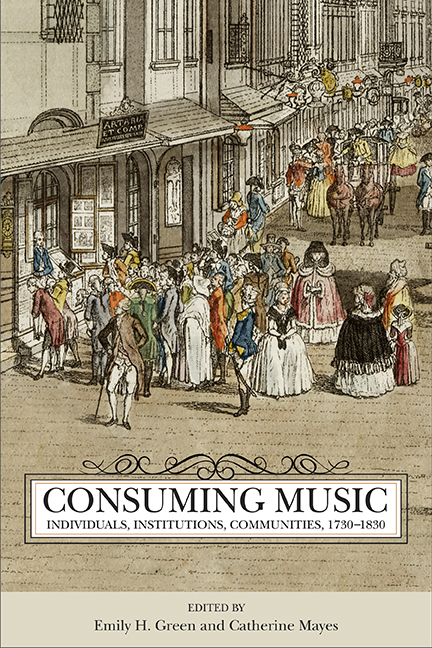Book contents
- Frontmatter
- Contents
- Acknowledgments
- Introduction
- Part One Selling Variety
- Part Two Edifying Readers
- 3 Morality and the “Fair-Sexing” of Telemann's Faithful Music Master
- 4 Eighteenth-Century Mediations of Music Theory: Meter, Tempo, and Affect in Print
- Part Three Marketing the Mundane
- Part Four Cultivating Communities
- List of Contributors
- Index
4 - Eighteenth-Century Mediations of Music Theory: Meter, Tempo, and Affect in Print
from Part Two - Edifying Readers
Published online by Cambridge University Press: 26 April 2018
- Frontmatter
- Contents
- Acknowledgments
- Introduction
- Part One Selling Variety
- Part Two Edifying Readers
- 3 Morality and the “Fair-Sexing” of Telemann's Faithful Music Master
- 4 Eighteenth-Century Mediations of Music Theory: Meter, Tempo, and Affect in Print
- Part Three Marketing the Mundane
- Part Four Cultivating Communities
- List of Contributors
- Index
Summary
If the Enlightenment is understood as an event in the history of mediation— as Clifford Siskin, William Warner, and others have productively suggested— then printed music made a considerable contribution to that event. The pages of music scores formed an important part of both public and private life in the eighteenth century, and new forms of publication allowed consumers increased access to them. This century saw the growth of music engraving, the invention of lithography, and a huge increase in the sheer number and variety of music printers and publishers. These developments took place within a rapidly evolving world of print culture more generally, as the proliferation of journals changed the quotidian relationships between print materials and their consumers while also affording new opportunities to advertise commercial print goods. Scholarship on book history and on music printing and publishing has begun to draw attention to the important role printed artifacts played in the history of thought and in everyday life.
Still, not all of the Enlightenment's printed objects were either books or scores; some were a bit of both. Put another way, a huge quantity of printed music is often ignored or forgotten in discussions of eighteenth-century book history: the musical examples included in books about music. Apart from simply falling between the typical scholarly divisions, musical examples present interesting challenges to the history of mediation. Hidden from direct view within the pages of words that enclose them, they are nodes of connection between media that allow us to ask questions about the uses and conceptualizations of print material. They are integrated into the text that surrounds them—and most often dependent upon it for complete comprehensibility— but they cannot be read in the same way as that text, and they do not have the same function.
One particular type of example, focused on meter and affect, dramatizes the disparity between media that are mixed on the page. Eighteenth-century books on music often contained lengthy taxonomies of meter in the form of omnibus musical examples. These taxonomies were intended to demonstrate the uses and varieties of meters and were also meant to build and reaffirm the sensibilities that allowed musicians to gauge the correct tempi and affects for pieces of music.
- Type
- Chapter
- Information
- Consuming MusicIndividuals, Institutions, Communities, 1730–1830, pp. 102 - 124Publisher: Boydell & BrewerPrint publication year: 2017



